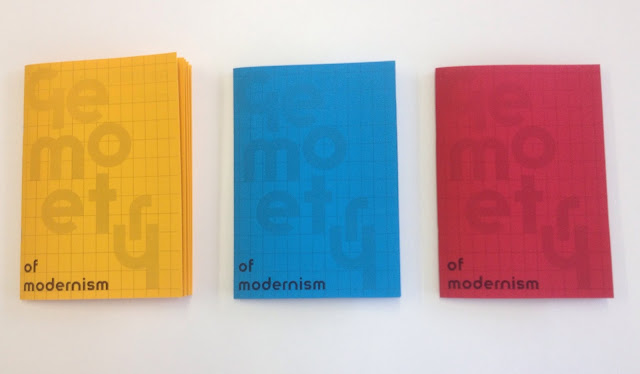During this
module I have been more relaxed about allowing for the project to change, from
the beginning when selecting an essay question to begin researching I originally
wanted to look at the influences and links of architecture within graphic
design. It was not until further reading and research that I realised that this
question would be too broad and difficult to answer. Natural progression within
projects is a process that I am still learning, but I have learnt to embrace this
change. My essay question moved more and more towards modernism and looking at
the earliest advancements in the work of the Bauhaus and De Stijl. Through
further reading and research, I feel my understanding of the topic and what
defines modernism has greatly improved. In terms of writing I have always found
this to be a weak point in my work but in second year I have tried to push this,
becoming aware of multiple theorists, finding less obvious sources and try to
push my writing to be more interesting and critically aware. I don’t feel
totally satisfied with this area but making sure I began my essay early and
stayed on top of deadlines made this process much more straightforward.
In terms of
the practical side of this project, being honest I found it a little hard to
get started, but once I had, I have found it to be really enjoyable and overall
I am pleased with what I have produced. Looking into modernism and the work associated
with the movement has been really useful, this is work that I feel I know
really well and love so it set a great basis for the project. On top of this
the work of modernism is so visual and dynamic this allowed my practical to
share such dynamism. In terms of the effectiveness of my practical work,
through my small questionnaire I found that it seemed to be interesting and
visually appealing, the direct nature of the communication was an area that
seemed to go down well, as well as the clear links shown between the various
pieces of art, architecture and furniture, this was really positive to see. I
would agree with the comments that the booklets could have done with more explanation,
if I was to do something different next time that would be changed. I would say
that the practical work was a little safe and I could have explored some more
innovative approaches but one thing that I am really pleased with is synthesis
between the practical work and the essay, the inclusion of quotes taken from my
essay only added to the communication showing how they tied together well.
Feedback has been an on-going process that has really governed my decisions and
I feel increasingly aware of the importance of gaining feedback and above all
documenting this.
Overall
this module has been a great learning curve and my confidence in writing has
improved. In terms of my general question and argument it does feel slightly
dated and for my COP 3 I would like to explore some more contemporary themes,
and again improve from the previous years work as this is progression is really
important to me and my practice.



































